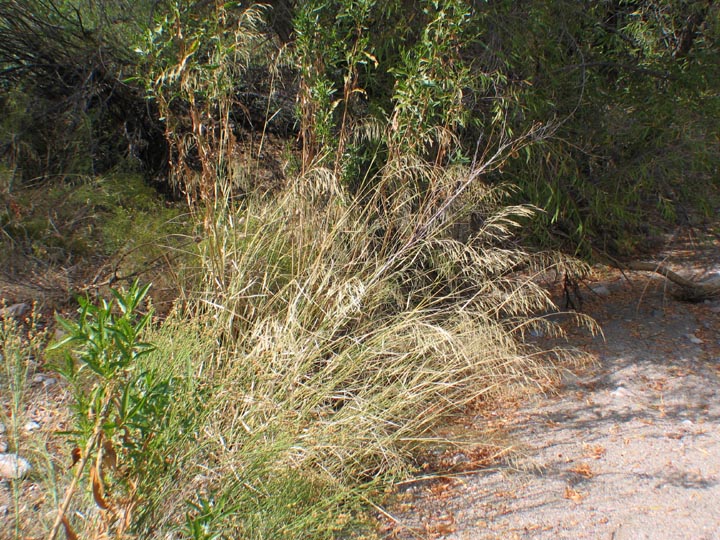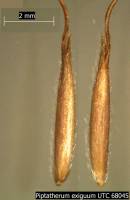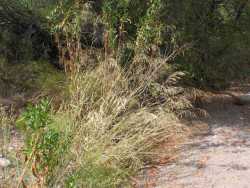Plants perennial; cespitose or soboliferous, sometimes rhizomatous. Culms 10-140(150) cm, erect, usually glabrous, usually smooth; nodes 1-6; branching intra- or extravaginal at the base, not branching above the base; prophylls concealed by the leaf sheaths. Leaves sometimes basally concentrated; cleistogenes not present; sheaths open, glabrous, smooth to scabrous; auricles absent; ligules 0.2-15 mm, membranous to hyaline; blades 0.5-16 mm wide, flat, involute, valvate, or folded, often tapering in the distal 1/3, apices acute to acuminate, not stiff, basal blades not overwintering, sometimes not developed, flag leaf blades well developed, longer than 1 cm. Inflorescences 3-40 cm, terminal panicles, open or contracted; branches straight or flexuous, usually scabrous, rarely smooth; pedicels often appressed to the branches. Spikelets 1.5-7.5 mm, with 1 floret; rachillas not prolonged beyond the floret; disarticulation above the glumes, beneath the floret. Glumes from 1 mm shorter than to exceeding the florets, subequal or the lower glumes longer than the upper glumes, membranous, 1-9-veined, veins evident, apices obtuse to acute or acuminate; florets 1.5-10 mm, usually dorsally compressed, sometimes terete; calluses 0.1-0.6 mm, glabrous or with hairs, blunt; lemmas 1.2-9 mm, smooth, coriaceous or stiffly membranous, tawny or light brown to black at maturity, 3-7-veined, margins flat, separated and parallel for their whole length at maturity, apices not lobed or lobed, glabrous or hairy, hairs about 0.5 mm, not spreading, awned, lemma-awn junction evident; awns 1-18(20) mm, centric, often caducous, almost straight to once- or twice-geniculate, scabrous; paleas as long as or slightly longer than the lemmas, similar in texture and pubescence, 2(3)-veined, not keeled over the veins, flat between the veins, veins terminating near the apices, apices often pinched; anthers 3, 0.6-5 mm, sometimes penicillate; styles 2 and free to their bases, or 1 with 2-3 branches. Caryopses glabrous, ovoid to obovoid; hila 1/2 as long as to equaling the length of the caryopses. x = 11, 12. Name from the Greek pipto, 'fall', and ather, 'awn'.






